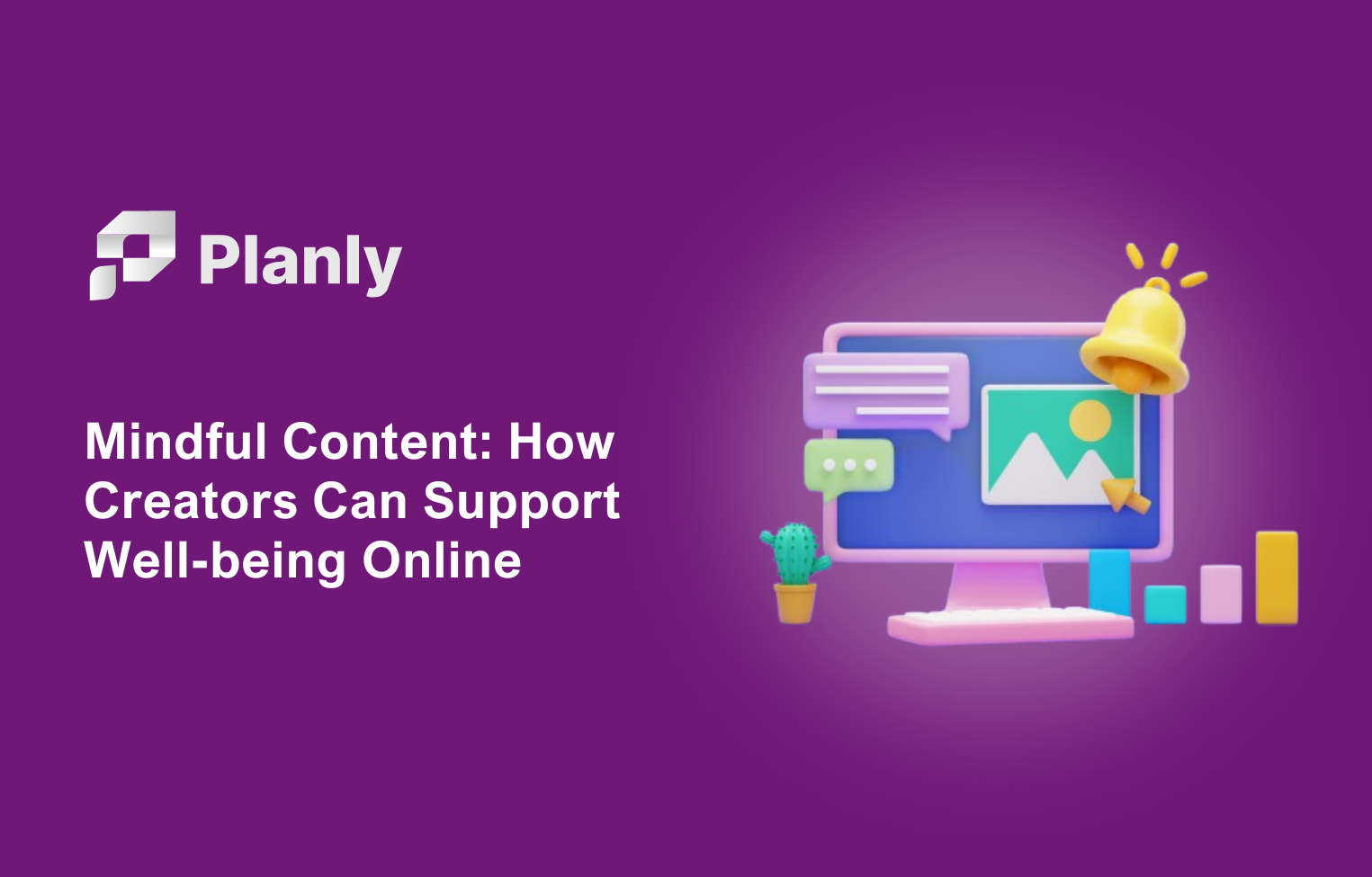
Introduction
Hey there! So, you're interested in learning more about Social Media ROI, huh? Well, you've come to the right place! Let's dive right in and break it down for you in a way that's easy to understand.
Understanding Social Media ROI
Social Media ROI stands for Return on Investment, and it's all about measuring the effectiveness of your social media efforts. In simpler terms, it's about figuring out if you're getting a good bang for your buck when it comes to all the time and resources you're putting into your social media marketing.
Now, ROI can be a bit tricky to measure when it comes to social media because it's not always as straightforward as looking at sales numbers. Social media is more about building relationships, creating brand awareness, and engaging with your audience. So, how do you measure the success of these intangible aspects? That's where setting clear objectives and tracking key performance indicators (KPIs) come into play.
But don't worry, we'll walk you through it step by step. By the end of this journey, you'll be a pro at measuring your social media ROI and showing off the results to your boss or clients.
Understanding Social Media ROI
So, you've been investing time and resources into your social media presence, but have you ever stopped to think about the return on investment (ROI)? Understanding social media ROI is crucial for any business looking to maximize its impact and make informed decisions about its marketing strategies. Let's break it down in a simple and friendly way!
Social media ROI is essentially the measure of the effectiveness of your social media efforts in terms of generating value for your business. It's about understanding how your social media activities contribute to your overall business goals and bottom line.
Why is Social Media ROI Important?
Knowing your social media ROI helps you assess the profitability of your social media campaigns and activities. It allows you to determine which strategies are working and which ones need improvement. By understanding your ROI, you can make informed decisions about where to allocate your resources and focus your efforts for the best results.
Factors to Consider in Social Media ROI
To calculate your social media ROI, you need to consider various factors such as the cost of your social media activities, the revenue generated from those activities, and the overall impact on your business goals. It's important to take a holistic approach and look at both quantitative and qualitative metrics to get a comprehensive understanding of your ROI.
Measuring Social Media ROI
There are different ways to measure social media ROI, depending on your goals and objectives. Some common metrics include website traffic, engagement rates, leads generated, conversions, and customer lifetime value. By tracking these metrics and analyzing the data, you can gain valuable insights into the effectiveness of your social media efforts.A YouTube content scheduler can help agency teams streamline their video production process, ensuring everyone is aligned and deadlines are consistently met.
Improving Social Media ROI
Once you've calculated your social media ROI, the next step is to identify areas for improvement. This could involve optimizing your content strategy, targeting the right audience, leveraging social media advertising, or refining your engagement tactics. By continuously monitoring and adjusting your strategies, you can maximize your social media ROI and drive better results for your business.
In conclusion, understanding social media ROI is essential for any business looking to make the most of its social media presence. By setting clear objectives, identifying key performance indicators, tracking metrics, and calculating ROI, you can measure the impact of your social media efforts and make informed decisions to drive success. So, next time you post on social media, remember to think about the ROI and how it aligns with your business goals!
Understanding what you want to achieve through your social media efforts is key to creating a successful strategy. Setting clear objectives helps you stay focused, measure your progress, and adjust your tactics as needed. Whether your goal is to increase brand awareness, drive website traffic, generate leads, or boost sales, having a clear objective will guide your actions and help you track your success.
How to Set Clear Objectives:
- Start by defining what you want to accomplish. Be specific and measurable. For example, instead of saying you want to "increase engagement," set a goal to "increase engagement rate by 20% within three months."
- Consider the SMART criteria when setting objectives. Make sure they are Specific, Measurable, Achievable, Relevant, and Time-bound. This will help you create goals that are realistic and attainable.
- Align your objectives with your overall business goals. Your social media efforts should support your company's objectives and contribute to its success.
- Communicate your objectives with your team. Make sure everyone is on the same page and understands what you are trying to achieve. This will help keep everyone focused and working towards the same goals.
Why Clear Objectives Matter:
Setting clear objectives for your social media campaigns is essential for measuring their success. Without clear goals in place, you won't be able to track your progress, assess the effectiveness of your strategies, or determine your ROI. By setting clear objectives, you can monitor your performance, identify areas for improvement, and make data-driven decisions to optimize your social media efforts.
Final Thoughts:
Remember, setting clear objectives is the first step towards achieving success on social media. By defining what you want to accomplish, aligning your goals with your business objectives, and communicating your objectives with your team, you can create a focused and effective social media strategy. So, take the time to set clear objectives for your campaigns, track your progress, and adjust your tactics as needed. Your efforts will pay off in the form of increased engagement, brand awareness, and ultimately, a positive ROI.
Identifying Key Performance Indicators (KPIs)

Alright, buckle up folks! We're diving into the world of Key Performance Indicators, or KPIs for short. Now, KPIs are like the compass that guides your social media strategy in the right direction. They help you measure how well your efforts are performing and whether you're hitting your goals. So, let's break it down and figure out how to choose the right KPIs for your social media ROI journey.
What are KPIs?
First things first, let's understand what KPIs actually are. KPIs are specific metrics that you use to track the performance of your social media marketing efforts. These indicators can vary depending on your goals and objectives, but they should always be measurable, relevant, and aligned with your overall business objectives. Think of them as the checkpoints along your social media roadmap that tell you if you're on the right track.
Choosing the Right KPIs
When it comes to selecting your KPIs, it's crucial to align them with your business goals. Are you looking to drive website traffic, increase brand awareness, boost engagement, generate leads, or increase sales? Once you've identified your objectives, you can then choose KPIs that directly tie back to those goals.
For example, if your goal is to increase brand awareness, your KPIs might include metrics like reach, impressions, and social shares. On the other hand, if you're aiming to boost engagement, you might focus on metrics such as likes, comments, shares, and click-through rates.
Common Social Media KPIs
There are a plethora of KPIs you can track on social media, but some common ones include:
- Engagement Rate: This measures how actively involved your audience is with your content through likes, comments, shares, and clicks.
- Reach: This tells you how many people have seen your content and helps gauge your brand's visibility.
- Conversion Rate: This measures the percentage of users who take a desired action, such as making a purchase or signing up for a newsletter.
- Click-Through Rate (CTR): This shows the percentage of users who clicked on a link within your social media post.
Remember, the key is to choose KPIs that align with your specific goals and provide valuable insights into the effectiveness of your social media efforts.
So, there you have it! Understanding and defining your KPIs is essential for measuring your social media ROI effectively. By choosing the right indicators and tracking them diligently, you can gain valuable insights into what's working, what's not, and where you can make improvements. Stay focused, stay consistent, and let your KPIs be your guiding light on your social media journey.
Tracking Metrics: The Key to Social Media ROI
So you've set your social media objectives, identified your KPIs, and started implementing your social media strategy. But how do you know if all your hard work is paying off? That's where tracking metrics comes in!
Tracking metrics is crucial for measuring the success of your social media efforts and determining your return on investment (ROI). By monitoring key metrics, you can gain valuable insights into what's working and what's not, allowing you to make informed decisions to optimize your social media performance.
Why Tracking Metrics Matters
Tracking metrics allows you to gauge the effectiveness of your social media campaigns and understand how they are impacting your business goals. Without tracking, you're essentially flying blind, making it difficult to assess your progress and make data-driven decisions.
Whether you're looking to increase brand awareness, drive website traffic, generate leads, or boost sales, tracking metrics is essential for determining the success of your social media efforts and maximizing your ROI.
What Metrics to Track
When it comes to tracking social media metrics, there are a plethora of data points you can monitor. Some key metrics to consider include:
- Engagement rate: Measure how your audience is interacting with your content through likes, comments, shares, and clicks.
- Reach: Determine how many people are seeing your social media posts and the potential impact of your content.
- Conversion rate: Track how many users are taking a desired action, such as signing up for a newsletter or making a purchase.
- Click-through rate (CTR): Measure the percentage of users who click on a link within your post.
By tracking these metrics and others that align with your social media objectives, you can gain a comprehensive understanding of your performance and make data-driven decisions to enhance your strategy.
Tools for Tracking Metrics
There are a variety of tools available to help you track and analyze your social media metrics effectively. Platforms like Google Analytics, Facebook Insights, and Hootsuite offer robust tracking capabilities, allowing you to monitor key performance indicators and evaluate the success of your campaigns.
By leveraging these tools, you can streamline the tracking process, gain real-time insights, and make informed decisions to optimize your social media ROI.
Remember, tracking metrics is not a one-time task but an ongoing process. Regularly monitoring your social media performance, analyzing the data, and adjusting your strategy based on insights is essential for achieving success in the ever-evolving world of social media marketing.
Reporting and Analysis

So, you've put in the time and effort to track your social media metrics and calculate your ROI. Now what? Well, it's time to dive into reporting and analysis to make sense of all that data and determine the success of your social media efforts. Let's break it down step by step:
1. Create a Comprehensive Report
Start by compiling all your data into a comprehensive report that outlines your key findings. This report should include a summary of your objectives, the KPIs you tracked, the metrics you collected, and, most importantly, your calculated ROI. Make sure to present the data in a clear and visually engaging way to make it easy for stakeholders to understand.
2. Analyze Your Results
Once you have your report in hand, it's time to analyze your results. Look for patterns, trends, and correlations in the data to better understand the impact of your social media efforts. Did certain campaigns perform better than others? Were there specific channels that drove more engagement? Use this analysis to identify what worked well and what areas need improvement.
3. Draw Insights and Recommendations
Based on your analysis, draw insights and recommendations for future social media strategies. What lessons can you learn from your past performance? What changes can you make to optimize your ROI in the future? Use this information to develop actionable recommendations that will help you achieve your social media goals more effectively.
4. Share Your Findings
Don't keep your findings to yourself! Share your report, analysis, and recommendations with key stakeholders within your organization. Whether it's your marketing team, senior management, or clients, it's important to communicate the impact of your social media efforts and the value they bring to the table. Be prepared to answer questions and provide context for your findings.
5. Iterate and Improve
Social media is a dynamic and ever-changing landscape, so it's crucial to continuously iterate and improve your strategies based on your findings. Use the insights you've gained from your reporting and analysis to refine your approach, test new tactics, and drive even better results in the future. Remember, social media ROI is an ongoing process, not a one-time task.
Reporting and analysis are essential components of measuring social media ROI. By taking the time to compile comprehensive reports, analyze your results, draw insights, share your findings, and iterate on your strategies, you'll be well-equipped to maximize the impact of your social media efforts and drive tangible business results. Remember, it's not just about the numbers – it's about using them to tell a compelling story of success!
In a conclusion, effective team collaboration is essential for agency success. By fostering open communication, setting clear goals, and leveraging collaborative tools, you can enhance productivity and teamwork. Encourage continuous learning and adaptability within your team to stay agile and innovative. Implement these collaboration tips to build a more cohesive, efficient team and drive your agency’s success.








